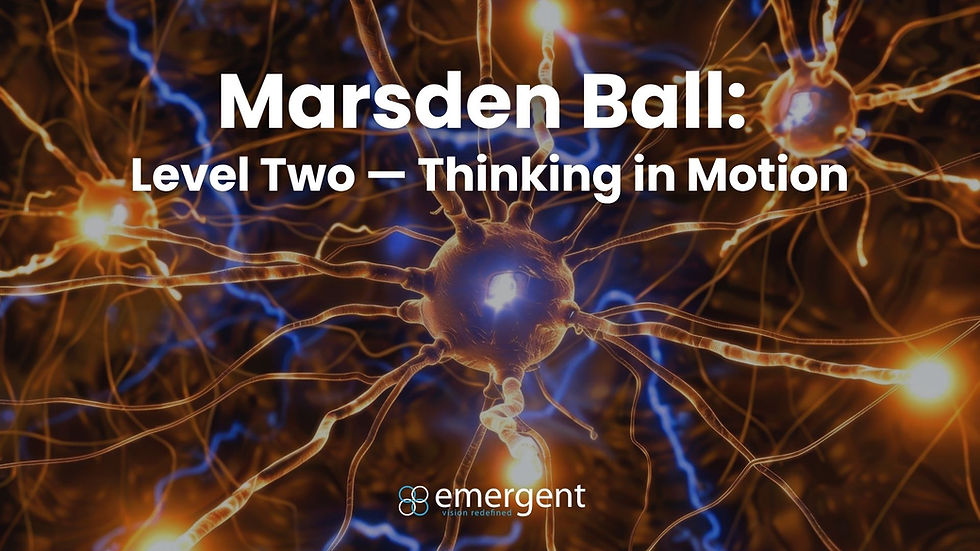Taming the Stampede: A Vision Therapist’s Personal Guide to ADHD
- James Smith
- Jun 27
- 3 min read
Updated: Jul 7

Many therapists find it difficult to guide a vision therapy session with that patient. You know the one. He’s always running—sometimes literally. Maybe his body is in constant motion, or maybe he talks nonstop and you can’t get a word in. Sometimes it’s his mind that’s running so fast he struggles to process everything around him. However it shows up, you feel the anxiety creeping in as you try to figure out how to slow him down and actually accomplish anything in the short Vision Therapy session you have.
I’m here to help.
Why am I qualified to talk about this? Well, because that patient was me— as a child, as a teenager, and even now as an adult. I’ve taken countless ADHD quizzes online. Today, I even managed to finish one before getting distracted by an email, a Google Chat, or a text message. Barely. And yes, I see the irony in writing a guide on working with attention-challenged patients while being one myself.
Even now, my brain is racing with ideas for how to structure this, how to modify therapy, and—well, you get the picture.
Let’s start with this: You can’t expect them to just stop, slow down, and comply. They may genuinely want to, but inside, it feels nearly impossible to bring everything into a calm, controlled state. That said, all is not hopeless. You can join them in their world and gently apply the reins—taming the inner stampede, bit by bit.

1. Movement Isn’t Optional—It’s Necessary
For many people with ADHD, movement is mandatory. Whether it's tapping a finger or swaying while doing the Hart Chart, the internal energy needs an outlet—or a meltdown might be on the horizon. So, lean into it. Add vestibular components to your therapy:
Balance boards
Beams
Standing on one foot
Walking forward and backward
Sitting on a yoga ball
All of these provide safe, structured outlets for that endless motion. Controlled movement can help soothe the chaos.
2. Use Their Imagination—It’s One of Their Superpowers
People with ADHD often have vivid, creative imaginations. That imagination fuels spontaneity, creativity, and non-linear thinking—sometimes bordering on wild, but often brilliant. They’re storytellers, world-builders.
So, use it. Integrate therapy into their imaginative play. One of my favorite patients never did plain old Brock String bead jumps. No, he did Transformer Bead Jumps.
Red was Optimus Prime
Yellow was Bumblebee
Green changed names every time… because, well, why not?
If you step into their narrative, you’ll be amazed at how much more engaged they become.
3. Help Them Feel Time
Many individuals with ADHD have a poor internal sense of time. Holding fixation for 10 seconds might feel like an eternity. Teaching them to feel the difference is a game-changer.
Try this:
Set a metronome to 60 BPM.
Use a clock with a visible second hand.
Have them tap, clap, or do small jumps to the beat.
Let them see, hear, and feel the rhythm of time. It makes the abstract much more concrete.
4. Patience and Flexibility Are Your Best Tools
Be patient. Go with the flow. Let them follow the “aha!” moments—even when they seem off-script. In those moments, they’re making connections, testing strategies, and building resilience. Yes, it might take longer. Yes, you might need to do more activities for less time. But you will make progress.
And they will be forever grateful.
Oh, and one more thing—what other job lets you walk on lava, become a wizard, and turn a Quoits ring into a magical sphere?
Oops! Gotta go… I have other squirrels to chase.





Comments